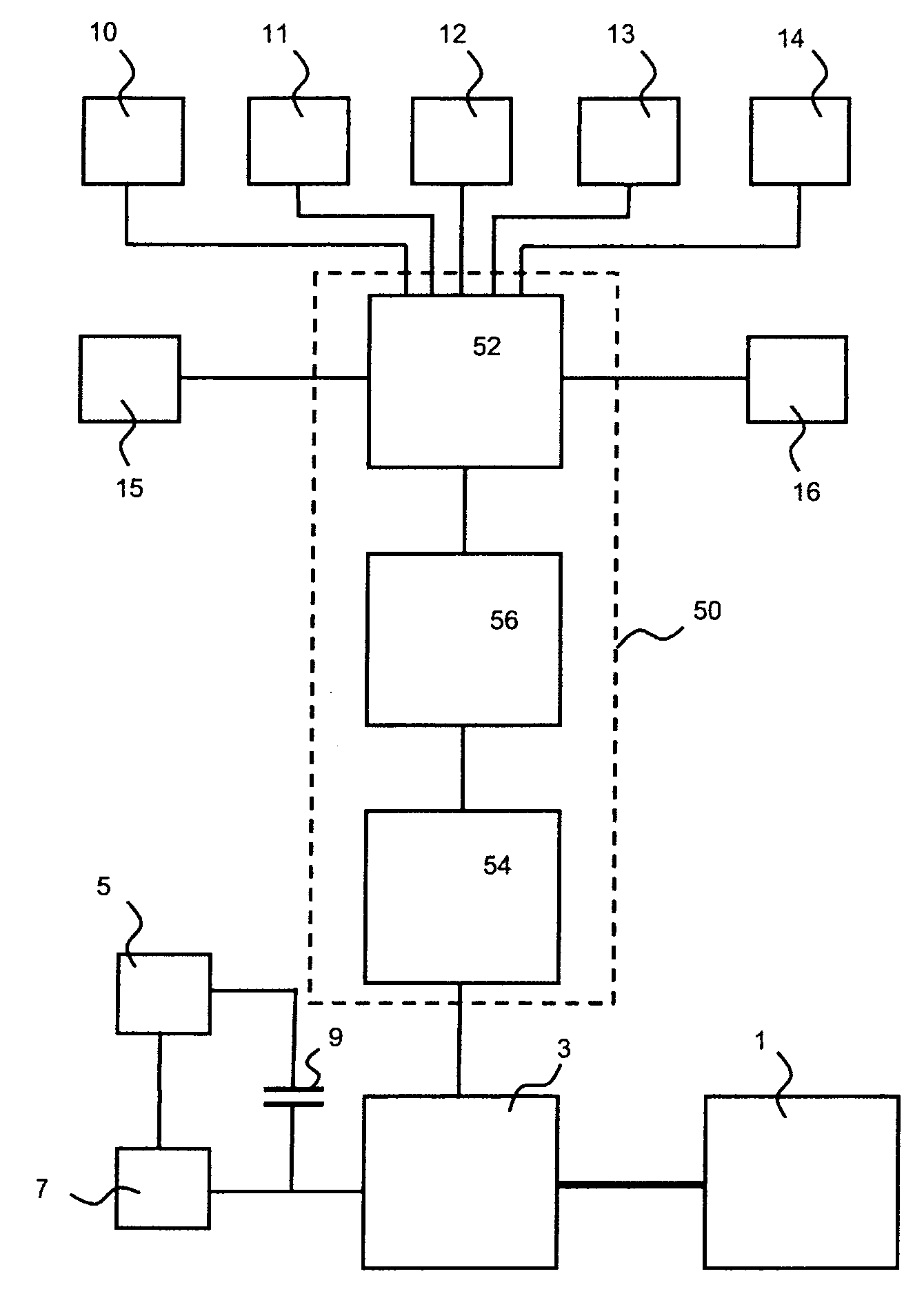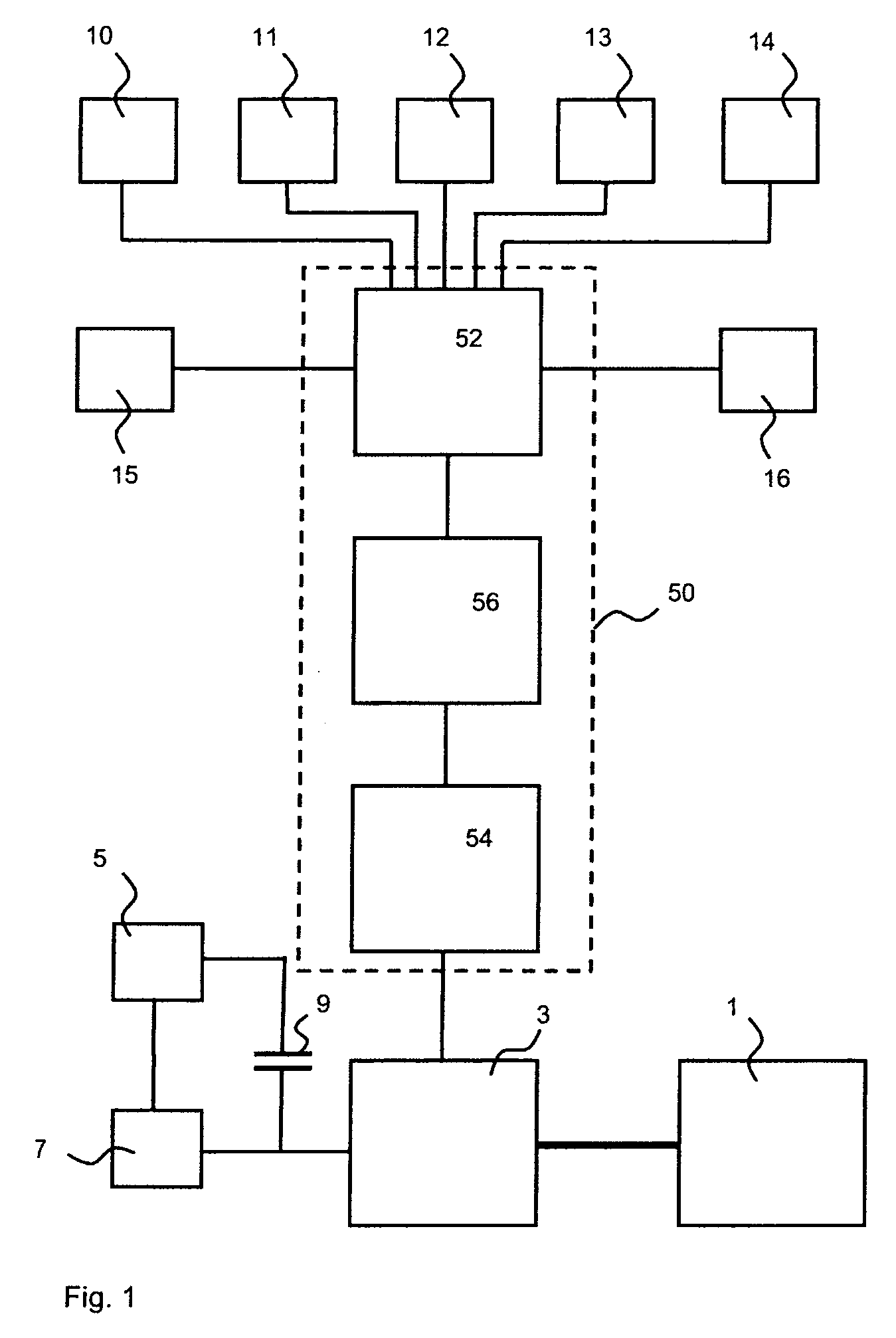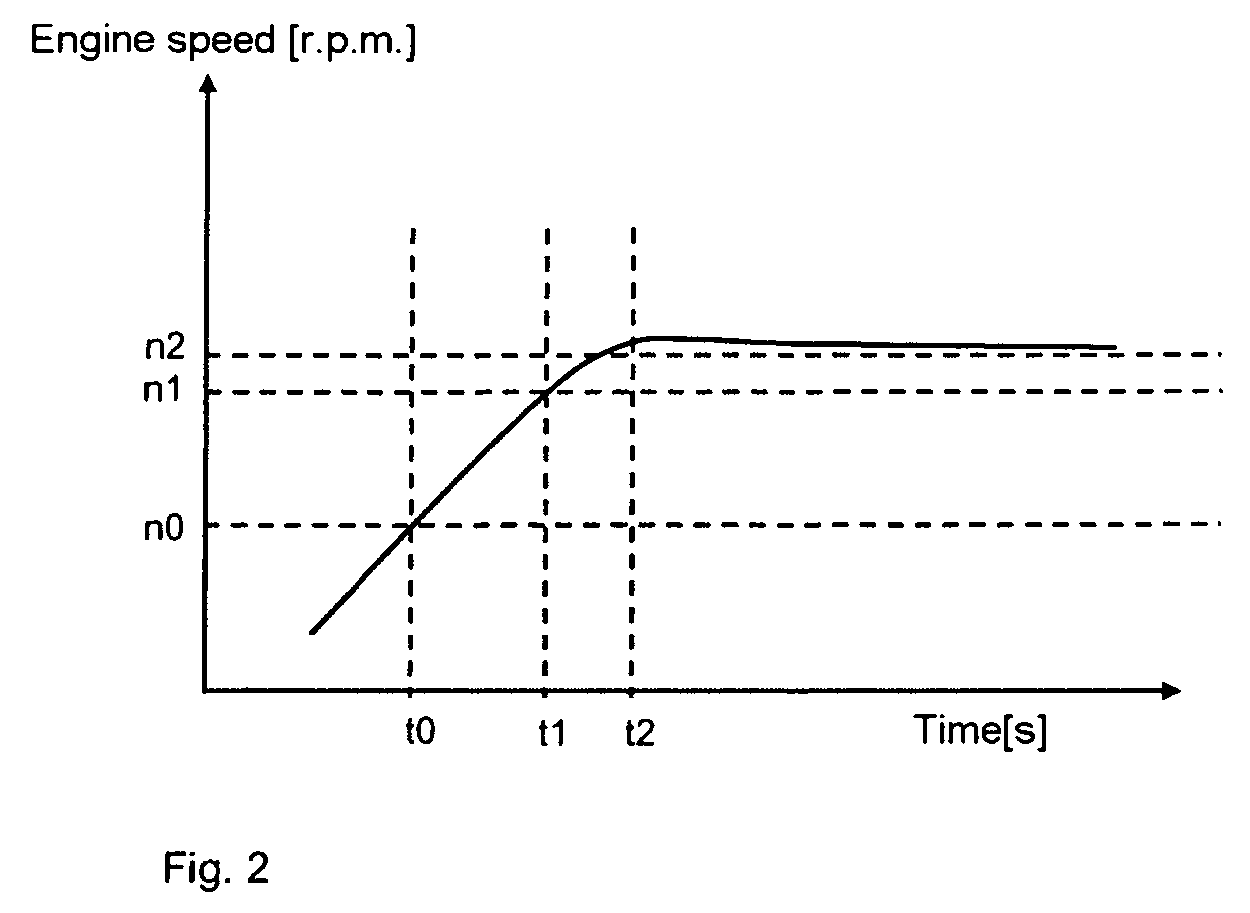System and method for vehicle braking
a vehicle and system technology, applied in the field of vehicle braking, can solve the problems of extreme situations in passenger vehicles, adversely affecting driving comfort, and general non-application of permanent brake systems
- Summary
- Abstract
- Description
- Claims
- Application Information
AI Technical Summary
Benefits of technology
Problems solved by technology
Method used
Image
Examples
Embodiment Construction
[0023]FIG. 1 shows in a schematic block circuit diagram components of a vehicle in conjunction with a brake device according to the invention. Only elements of the vehicle which are necessary to explain the brake device are illustrated for the sake of clarity. However, the vehicle can of course also have any other components which are usually present in vehicles.
[0024] The vehicle is equipped with a vehicle engine 1 which may be embodied, in particular, as an internal combustion engine, for driving the vehicle. In order to convert part of the engine power into electrical power, the vehicle also has a vehicle generator 3. In the present exemplary refinement, the latter comprises a magnetic rotor which is mechanically coupled to the engine 1 and an inductor which surrounds the rotor and has a coil winding. The mechanical coupling of the rotor to the vehicle engine, which can be brought about using, for example, a shaft, has the purpose of transmitting the rotary movement made availab...
PUM
 Login to View More
Login to View More Abstract
Description
Claims
Application Information
 Login to View More
Login to View More - R&D
- Intellectual Property
- Life Sciences
- Materials
- Tech Scout
- Unparalleled Data Quality
- Higher Quality Content
- 60% Fewer Hallucinations
Browse by: Latest US Patents, China's latest patents, Technical Efficacy Thesaurus, Application Domain, Technology Topic, Popular Technical Reports.
© 2025 PatSnap. All rights reserved.Legal|Privacy policy|Modern Slavery Act Transparency Statement|Sitemap|About US| Contact US: help@patsnap.com



